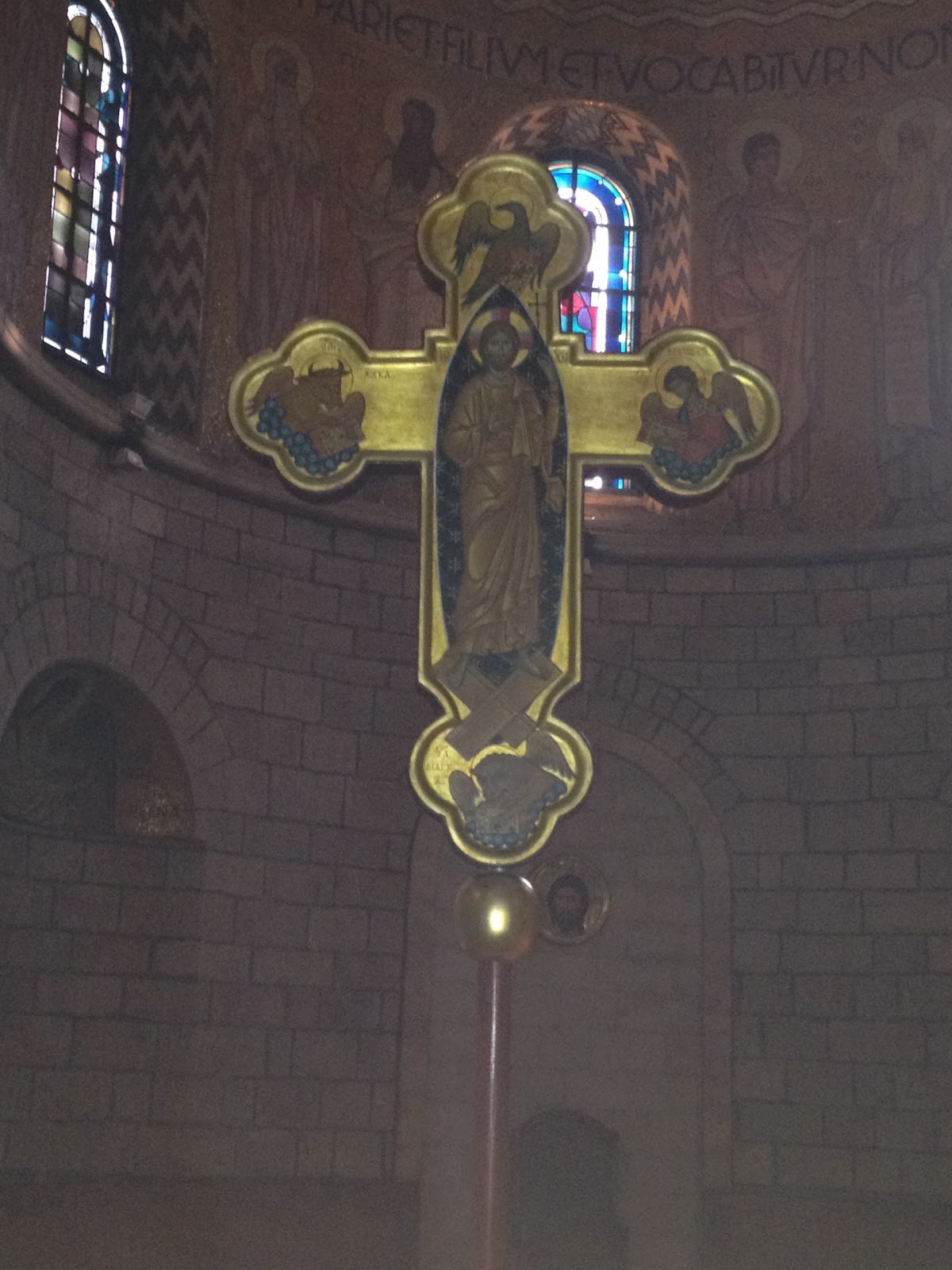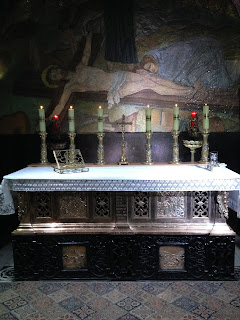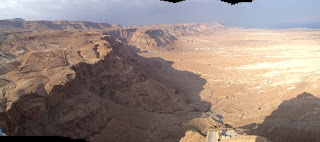Today was a fun day. We started with mass in Dormition Abbey, which is very pretty and has very nice mosaics, especially on the floor. The floor depicts salvation history (a zodiac calendar with the Trinity at the center surrounded by the prophets, the evangelists, and the twelve apostles), but is also very dark (so my photos turned out poorly). Under the church is a very cool Marian shrine, with what looks like a tomb, since the Abbey is built over the house of Mary in Jerusalem, so if she fell asleep in Jerusalem, she did so there (I still believe the Ephesus site is better, and I am still not convinced Mary died before the Assumption). The dome overhead is really cool and shows the Old Testament matriarchs (Ruth, Eve, Esther, etc) but again, it was dark.
 |
| Dormition Abbey |
 |
| The shrine to Mary |
 |
| A risen savior cross I can get behind. |
After praying there, TJ and I went to the Wailing Wall. It is a very powerful place to pray. What struck me was the feeling of collective sorrow, that this is as close as Jews can get to the Temple. The closest analogy i can think of is if we were able to attend mass but never receive the Eucharist. I don't think many of us would last long, and yet for almost 2000 years Jews have come to Jerusalem to pray.
I spent the rest of the day just hanging out, and tomorrow we have a half-day free (but I must pack). Then we travel for 25 hours, but at the end we are home. I looked at the weather forecast today for the Twin Cities and freaked out, but luckily I was looking at Celsius.






































